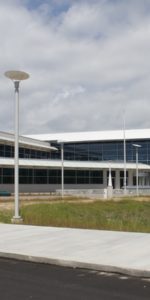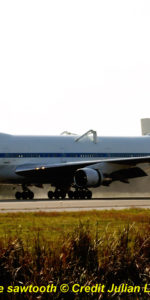
By the spring of 1970, six months had passed since Neil Armstrong and Buzz Aldrin triumphantly fulfilled President John Kennedy’s goal of landing a man on the Moon before the end of the decade. Their steps on the flat plain of the Sea of Tranquillity remain the most remarkable accomplishment of our species, yet the extent to which the public – once enamoured by the possibilities of space travel – grew weary and apathetic towards the exploration of the Moon is equally remarkable. When Apollo 12 flew in November 1969, few were watching. Fewer still were expected to tune in when Apollo 13 launched towards the lunar highlands, and a hilly place known as Fra Mauro, which was thought to contain material evidence from the Moon’s geological youth. The thrill had gone and Americans were more preoccupied with ending an unpopular war in Vietnam and starting a new war on poverty in their own country. The voyage of Apollo 13, for a few days, refocused the world’s attention on space.
Commanding the mission was veteran astronaut Jim Lovell, who had flown to lunar orbit before and made no secret of the fact that he yearned to leave his footprints on the Moon’s dusty surface. In August 1969, his wife, Marilyn, experienced a superstitious twinge when Lovell told her the fateful number of his mission…but in words taken from Ron Howard’s movie, and probably rooted in real events, he dismissed her concern. “It comes after twelve!” In January 1970, the press made much of NASA’s announcement that the mission would be postponed from 12 March until 11 April; were budget problems to blame, they speculated, or a problem with the spacecraft? Neither was actually the case and the delay simply represented a ‘stretching-out’ of the remaining lunar missions to give Lovell’s crew more time to plan their orbital and surface science activities. Although Apollo 13 would not launch on Friday the 13th, it was scheduled to launch at 13:13 Houston time. Surely, crowed the superstitious masses, this was a harbinger of impending doom.
The slight delay gave the crew – Lovell, his command module pilot, Ken Mattingly, and his lunar module pilot, Fred Haise – more free time to devote to their families. The backup crew, also, had time to themselves. Haise’s backup, Charlie Duke, happened to visit a friend in late March. Unfortunately, one of his friend’s children, three-year-old Paul Hause, had fallen ill with German measles…and Duke succumbed. He had routine access to Lovell, Mattingly and Haise, on a daily basis, and there was very real concern that he had infected them. Flight surgeons quickly ascertained that Duke was not contagious, but the prime crew found themselves yielding to daily blood tests in their final days on Earth. On 6 April, Lovell and Haise were cleared as being probably immune, but Mattingly remained a question mark. The two-week incubation period of German measles meant that he might develop full-blown symptoms during the flight. His role on Apollo 13 was critical; although he would not land on the Moon, Mattingly was responsible for the rendezvous and docking in lunar orbit. By the 7th, NASA physician Chuck Berry called for Mattingly to be dropped from the mission.

Jim Lovell complained directly to NASA Administrator Tom Paine, telling him that Mattingly had worked hard and conscientiously and deserved his place on Apollo 13. After all, it was only measles…a relatively mild illness in adults, and even if Mattingly did fall ill, it would probably be during the quiet flight back to Earth. Paine would have none of it. He was fighting Congress to save NASA’s budget – and specifically to save three lunar landing missions from cancellation – and the risk of measles in space (such as blurred vision or swollen joints in the hands) would leave NASA wide open to attack from the space agency’s critics. One option was to postpone Apollo 13 until the next lunar launch window on 9 May, but that risked allowing some of the Saturn V rocket’s components to degrade and threatened an additional cost of $800,000. In hindsight, Lovell wrote in his autobiography, Lost Moon, he should have recommended a delay…but hindsight is easy when viewed with 20-20 vision. With the flight surgeons calling for Mattingly to be replaced by his backup, Jack Swigert, Lovell had little option but to agree.
In the 1995 movie, Apollo 13, Swigert is presented as inexperienced and, at one stage, actor Kevin Bacon described his duties as having to “set up the guest list and book the hotel room” for the launch VIPs. This was far from accurate. Swigert was one of the astronaut office’s most competent pilots and he and his comrades, Charlie Duke and John Young, were not only ready to step into the shoes of Lovell’s men, if needed, but they could actually integrate one of their number into the prime crew. “We were ready to go as a crew,” Duke recalled in a NASA oral history, “and it showed the beauty of the synergy in all of our training that you could take somebody, a week before liftoff, stick him in and everyone felt comfortable.” Having said this, Deke Slayton, the head of flight crew operations, had his own reservations. To him, it was like dropping Glenn Miller into Tommy Dorsey’s band; both were great musicians, but each had individual styles. The deciding factor for Slayton was that the command module pilot would spend a lot of time alone, so it was reasonable to send Swigert in Mattingly’s place. Had Lovell or Haise fallen ill, the outcome would almost certainly have been different and probably would have led to a delay until May.

With Swigert’s addition to the crew, the final days of training were hectic. “Normally, you would literally quit training,” recalled Fred Haise in his NASA oral history, “go off to a beach house and be isolated. Generally, you might read your checklist and go a little fishing…but get rested up for the launch.” Instead, they returned to the simulator to mould themselves into a new team. During one ‘sim’ on 9 April, Swigert proved himself to be a maestro on the command module systems. As for the rest of the crew, Lovell’s prior space experience was the pinnacle of a star-spangled aviation career which saw him narrowly miss selection for Project Mercury. Haise, meanwhile, was described by Ken Mattingly as “the fastest switch-thrower, button-pusher in the West” – abrupt, yet encyclopaedically knowledgeable – and a perfect selection for Apollo 13.
Lovell and Haise’s target on the lunar surface was a hilly region known as ‘Fra Mauro’, named in honour of a 15th-century Venetian monk, who completed one of the earliest maps of the Old World. Unlike the flat plains on which Armstrong and Aldrin and Pete Conrad and Al Bean had walked, Fra Mauro was a rugged island in the middle of the Ocean of Storms. Many geologists believed that the lunar highlands had remained essentially unchanged, geochemically, since the Moon’s formation and might offer some of the oldest rock specimens. Some rocks had already been associated with violent impacts – such as that which created the yawning basin of Mare Imbrium – and Fra Mauro, 480 km to the south, was thought to contain some of the ejecta material from this cataclysmic event. If Lovell and Haise could find ejected crustal material from the pre-Imbrium era, it would help geologists to ascertain when the impact occurred and improve their understanding of lunar history. Specifically, the astronauts would explore the 300 m Cone Crater, whose own impact was suspected to have ‘dug’ into a ridge of Imbrium ejecta. Scientifically, Apollo 13 was an exciting mission.

To reach Fra Mauro, Lovell, Swigert and Haise would approach the Moon slightly differently from earlier crews. Instead of entering a near-circular orbit, they would adopt an elliptical path, with a high point of 110 km and a low point of just 15 km. This would mean that Lovell and Haise, in the lunar module, known as ‘Aquarius’, would not need to perform a descent orbit insertion burn and thus would have an extra 15 seconds of hover time to select an appropriate landing site. Months of training had honed Lovell’s skills and he was aiming for a patch of bright ground, somewhere between two groups of craters, which he had nicknamed ‘Doublet’ and ‘Triplet’.
Apollo 13 carried enormous potential for being a scientific bonanza when it speared for space on the afternoon of 11 April 1970. The realisation that it might prove to be something out of the ordinary came a few minutes into the ascent, when the centre J-2 engine on the Saturn V’s second stage shut down prematurely. The remaining four engines automatically compensated for the lost thrust by firing an additional 33 seconds, but even this produced a slight shortfall. Finally, the Saturn’s S-IVB final stage had to burn an extra few seconds to get them into low-Earth orbit. The glitch was attributed to ‘pogo’ oscillations and gave Mission Control a momentary fright, but within hours the S-IVB fired a second time to boost Apollo 13 on a four-day journey towards the Moon. Jack Swigert demonstrated his skills by undocking the command and service module, named ‘Odyssey’, from the S-IVB, swinging it around 180 degrees and extracting Aquarius.

For the first two days of their voyage, the flight was almost perfect. According to capcom Joe Kerwin, the mission controllers were “bored to tears”, with no spacecraft problems to work. The chatter between Houston and the three men on their way to the Moon was relaxed and routine. Swigert had forgotten to file his tax returns, prompting a chuckle from Kerwin and an offer to request an extension on his behalf. Even the 13th seemed relatively non-descript…until the evening, just before the crew bedded down for the night. Fifty-five hours after launch, Jim Lovell gave his Earthly audience a tour of the lunar ship – firstly, Aquarius, then back through the connecting tunnel into Odyssey, revealing helmet visors, equipment and hammocks – and ensured that the thunderous theme from 2001: A Space Odyssey was playing in the background. It was 9:00 pm in Houston when he bade his audience goodnight. Although most Americans were glued to their televisions that evening, Lovell could hardly have known that their choice of programme was not a tour of a lunar ship…but any of the other channels’ offerings: The Doris Day Show, Rowan & Martin’s Laugh-In, Where Bullets Fly and Here’s Lucy.
In fact, the majority of audience members watching as Lovell, Swigert and Haise travelled to another world were seated in the auditorium of Mission Control. At the back of the room, in a glass-faced gallery, were the astronauts’ families. When Lovell signed off for the night, they were all pleased. In a few days’ time, their menfolk would reach the Moon and begin one of the grandest missions of exploration ever undertaken in human history.
Seven minutes after the telecast ended, disaster struck Apollo 13 and left all three men in mortal danger.
Part 2 of this four-part article will appear on Friday.
Missions » Apollo »





April 1970 did not have a Friday the 13th.
Apollo 13 launched on Saturday April 11 and the explosion was Monday night April 13. Splashdown was Friday April 17. I was 11 years old and remember it well.
Jim, thanks so much for pointing out my glaring error. I have changed it accordingly. Regards, Ben